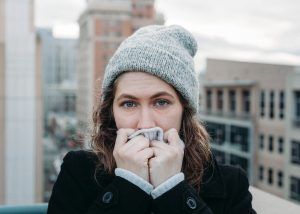
It’s that time of year where the days are still short, the skies are gray, and the air is freezing. At least, that’s how it is if you live in the Midwest. It’s no secrete, I’m not a fan of the winter either, and this time of year can leave me feeling… well… kind of blue.
The winter blues, or sometimes what we call Seasonal Affective Disorder (SAD), affects about 5 percent of the population, with even higher numbers in the northern latitudes.
The trademarks of SAD include:
- Feelings of sadness or hopelessness only during certain times of the year, typically in the winter months
- Lack of energy
- Difficulty sleeping or disruption in your sleeping patterns
- Changes in weight or food cravings
- Lack of interest in things you used to enjoy
One of the best treatments for SAD is light therapy. The good news is that light therapy is pretty affordable, has little to no side effects, and is easy to implement into your daily life. I’m a big fan of the Verilux Happy Light. Miroco has a smaller more portable light, which is another nice option.
You want to aim for somewhere between 15 and 30 minutes of exposure to your lamp, ideally first thing in the morning within about an hour of waking. Place your lamp close to you, within about three feet, and off to the side so that the light is in your peripheral (side) vision. You should avoid looking directly at the lamp. Typically I recommend starting with 15 minutes and then increasing by five minutes a week until you reach a level of exposure that feels good. People usually feel improvement after about two weeks.
If you’d like to hear more about Seasonal Affective Disorder, what causes it, and other treatment options, you can check out our video at @drkristinewberry on Instagram.
The post Winter Blues Got You Down? appeared first on The Sirona Center for Integrative Health.
Azadian Homes Blog

Contact
Phone:
630-383-7222
Email: sironacenterillinois@gmail.com
Location:
2005 N Bloomingdale Road, Suite B
Glendale Heights, IL 60139
All Rights Reserved | The Sirona Center

